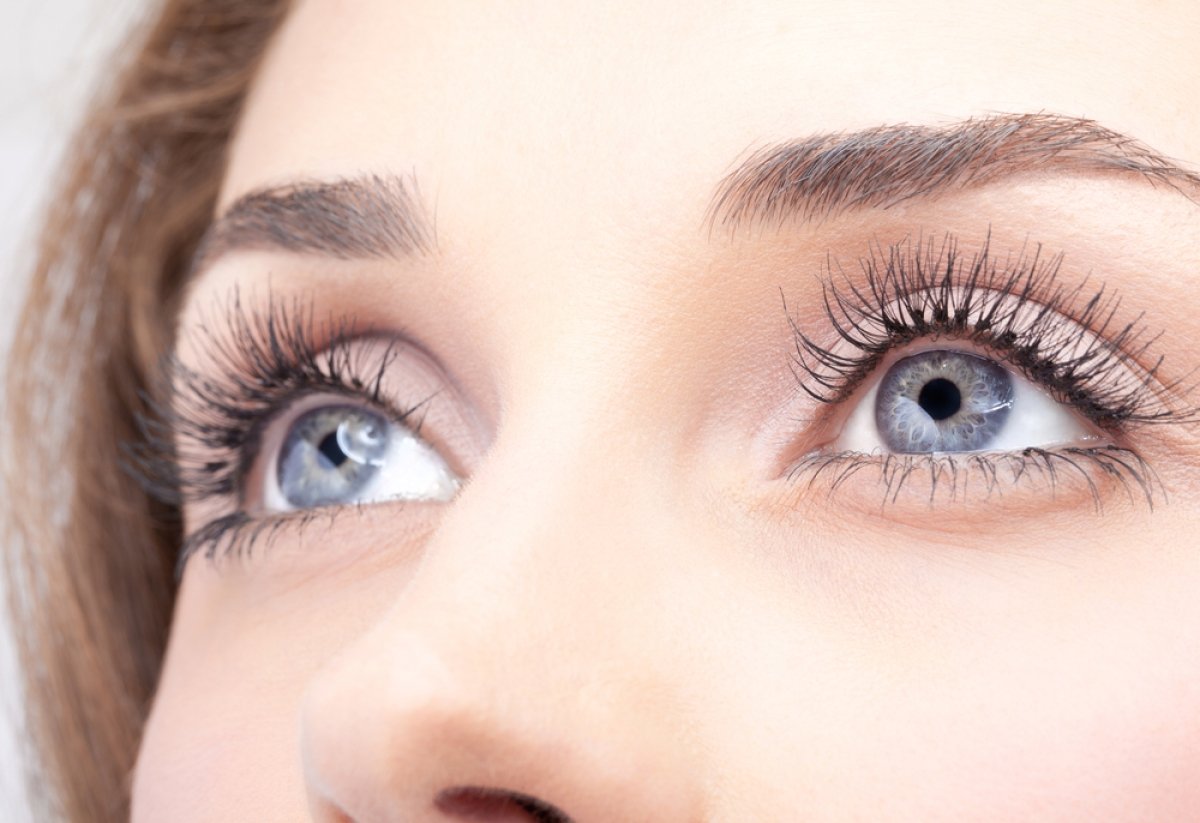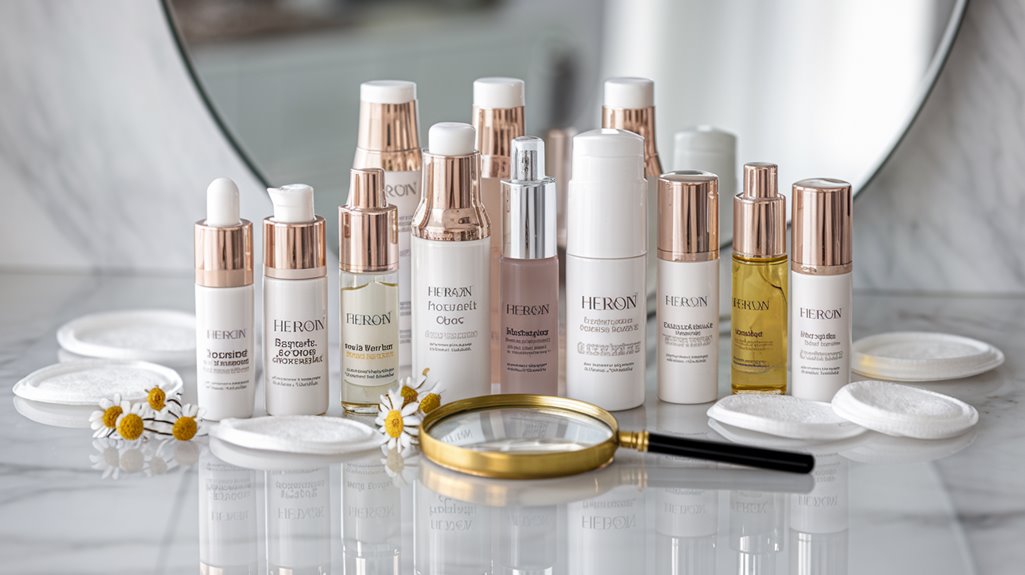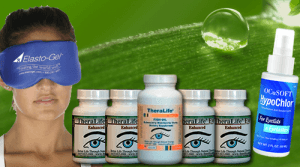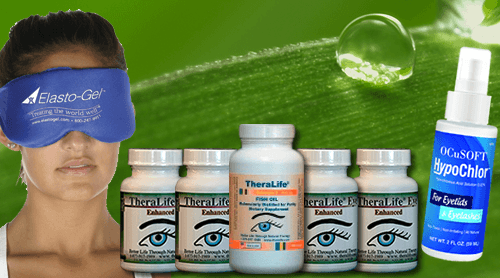To select the right eyelid cleanser for blepharitis, consider TheraLife’s products, which are designed with customer needs in mind. They incorporate ingredients like hypochlorous acid and tea tree oil known for their antimicrobial properties, helping to effectively manage blepharitis symptoms. TheraLife’s hypoallergenic and preservative-free formulations minimize irritation, catering to various skin types and personal preferences in product form, such as foam or liquid. Consulting with eye care professionals is recommended for personalized advice to ensure treatment efficacy. TheraLife emphasizes regular symptom evaluation to make necessary adjustments, supporting optimal blepharitis care. For more insights, TheraLife provides extensive resources on blepharitis management and the benefits of their products.
Best Blepharitis Treatment From TheraLife
Add To CartKey Takeaways
- Choose a cleanser with natural antimicrobial agents to effectively reduce bacterial load.
- Opt for hypoallergenic ingredients to minimize irritation and maintain ocular surface balance.
- Select preservative-free options to reduce inflammation risk and ensure ingredient transparency.
- Consider foam cleansers for gentle application or liquid cleansers for targeted use.
- Consult eye care professionals for personalized advice and to rule out other conditions.
Understanding Blepharitis and Its Symptoms
Blepharitis, a common inflammatory condition affecting the eyelids, often leads to discomfort and irritation. You’ve likely experienced symptoms such as redness, itching, or a gritty sensation in your eyes.
Understanding blepharitis causes is essential for managing this persistent condition. It’s often triggered by bacterial infections, seborrheic dermatitis, or dysfunction of the meibomian glands, which are critical for proper tear film production.
Eyelid discomfort is a hallmark of blepharitis, making it important to recognize the signs early. You might notice crusting around the eyelids upon waking or increased tear production, which paradoxically can worsen dry eye symptoms.
Identifying these symptoms promptly can help you seek appropriate treatment, reducing the risk of complications like chronic eye irritation or vision problems. Eye doctors often use tests like tear breakup and Schirmer’s tests to assess eyelid margins, oil gland openings, and tear quality.
The Importance of Eyelid Hygiene
Maintaining proper eyelid hygiene is essential for managing blepharitis and preventing complications. Regular cleansing of the eyelid margins helps to prevent microbial colonization, thereby reducing the risk of eye infections. Additionally, effective hygiene practices can mitigate inflammatory responses, decreasing the overall risk of exacerbating blepharitis symptoms. Using hypoallergenic and ophthalmologist-tested products can further ensure that cleansing does not irritate sensitive eyes and supports long-term eye health.
Preventing Eye Infections
Eyelid hygiene is crucial in preventing eye infections, particularly for individuals prone to blepharitis. Adhering to effective hygiene practices can greatly reduce microbial load and prevent pathogens from causing infections. Regular cleansing of the eyelids serves as a preventive measure against bacterial accumulation and inflammation. Use a specialized eyelid cleanser with antibacterial properties for best results. Pure hypochlorous acid is a natural defense mechanism against pathogens and plays a significant role in maintaining eyelid hygiene.
| Preventive Measures | Hygiene Practices |
|---|---|
| Daily Eyelid Cleansing | Use Sterile Cleansers |
| Avoid Eye Makeup | Replace Makeup Regularly |
| Hand Hygiene | Wash Hands Before Touching Eyes |
Incorporating these preventive measures into your routine can lessen the risk of eye infections. Consistent hygiene practices, such as washing hands before touching your eyes, are crucial. Remember, your commitment to eyelid hygiene is a cornerstone in maintaining ocular health and minimizing infection risks.
Reducing Inflammation Risks
While inflammation around the eyelids can be distressing, prioritizing proper eyelid hygiene is vital in mitigating these risks.
Effective eyelid cleansing reduces eye irritation, a common symptom of blepharitis, by removing debris and bacteria that exacerbate inflammation. Consistent hygiene practices, like using a gentle eyelid cleanser, can markedly decrease the frequency and severity of flare-ups.
Incorporating lifestyle adjustments is essential.
Avoid using harsh cosmetics or skincare products that can aggravate the sensitive eyelid area. Manage environmental factors by reducing exposure to allergens and irritants. Incorporate omega-3 fatty acids in your diet, shown to improve eyelid health by reducing inflammation. Chronic conditions like blepharitis require a multifaceted approach, combining treatments to maintain eyelid hygiene and prevent bacterial growth.
Key Ingredients to Look for in Eyelid Cleansers
When selecting an eyelid cleanser for blepharitis, focus on formulations containing natural antimicrobial agents, which can effectively reduce bacterial load without harsh chemicals. Consider products with gentle cleansing ingredients that maintain the delicate balance of the ocular surface, minimizing the risk of irritation. Evidence supports that these components can enhance eyelid hygiene and alleviate symptoms associated with blepharitis. Hypochlorous acid solutions have been shown to be effective against microbial agents and can play a crucial role in managing blepharitis.
Natural Antimicrobial Agents
Understanding the significance of natural antimicrobial agents in eyelid cleansers is crucial for effective blepharitis care.
Natural disinfectants, such as tea tree oil and aloe vera, are key ingredients that have demonstrated efficacy in reducing microbial presence on the eyelids. These components act as natural antimicrobial agents, targeting the bacteria commonly associated with blepharitis.
Incorporating herbal remedies like chamomile and calendula can also enhance the therapeutic effects, providing soothing properties while minimizing bacterial colonization.
Scientific evidence supports the use of these natural substances due to their antimicrobial activity and minimal side effects. Eyelid hygiene is crucial for managing blepharitis symptoms, and choosing the right cleanser with natural ingredients can significantly improve outcomes.
When choosing an eyelid cleanser, prioritize formulations containing these natural ingredients to guarantee thorough care.
Gentle Cleansing Ingredients
Selecting an eyelid cleanser with gentle cleansing ingredients is essential for managing blepharitis effectively. You should opt for formulations that include gentle foaming agents, which help in removing debris and excess oils without causing irritation. Mild surfactants such as cocamidopropyl betaine are often recommended due to their ability to cleanse delicately yet effectively. Additionally, seeking out soothing extracts, like chamomile or aloe vera, can provide anti-inflammatory benefits, reducing redness and discomfort associated with blepharitis. These botanical extracts have been clinically shown to promote healing and restore the natural barrier function of the eyelid skin. It is important to maintain eyelid cleanliness regularly to prevent flare-ups and manage symptoms of blepharitis.
Identifying Your Skin Type
How do you determine your skin type when addressing blepharitis? Understanding your skin type is essential for selecting eyelid cleansers that guarantee skin sensitivity and product compatibility. Begin by observing how your skin reacts to different products. Does it feel oily or dry? Does it exhibit redness or irritation? Here’s a basic guide:
| Skin Type | Characteristics |
|---|---|
| Oily | Shiny, prone to acne |
| Dry | Flaky, tight feeling |
| Sensitive | Redness, irritation, burning sensations |
| Combination | Oily in T-zone, dry elsewhere |
Knowing your skin type will help tailor your blepharitis care. If your skin is sensitive, opt for hypoallergenic products. Dry skin benefits from hydrating formulations, while oily skin may require non-comedogenic options. Understanding these nuances aids in effective blepharitis management. It’s important to maintain good hygiene practices to reduce the occurrence of blepharitis, as they play a vital role in managing the condition effectively.
Comparing Different Types of Eyelid Cleansers
When selecting an eyelid cleanser for blepharitis, you’ll need to take into account the efficacy of foam versus liquid formulations, as each offers distinct benefits regarding ease of use and coverage.
Prioritize hypoallergenic ingredients to minimize the risk of irritation, especially if you have sensitive skin.
Additionally, choosing preservative-free options can further reduce potential allergens, supporting a safer ocular environment.
It is important to regularly follow up with eye care professionals to monitor the effectiveness of your eyelid hygiene routine and make necessary adjustments to your treatment plan.
Foam vs. Liquid
While managing blepharitis, understanding the differences between foam and liquid eyelid cleansers is essential for effective care.
Foam cleansers, known for their unique foam consistency, offer a gentle application that minimizes friction, reducing irritation on sensitive eyelids. Their aerated form allows for thorough cleansing, reaching debris and oils lodged in eyelash follicles.
In contrast, liquid cleansers possess a more fluid liquid texture, which can be ideal for targeted application and rinsing away residue. They often require the use of cotton pads or swabs, providing precise control over application areas.
Choosing between foam and liquid cleansers depends on individual needs and preferences. Consider factors such as the severity of blepharitis, ease of use, and personal comfort.
Consulting an ophthalmologist for tailored recommendations guarantees the best blepharitis management.
Using artificial tears can also be an effective complementary approach, as they help maintain moisture and alleviate dryness associated with blepharitis.
Hypoallergenic Ingredients
Selecting the right cleanser type is just one aspect of managing blepharitis effectively. You should prioritize products with hypoallergenic ingredients to minimize irritation and allergic reactions. Hypoallergenic benefits include reducing inflammation and promoting ocular surface health. Ingredient sourcing is fundamental; choosing cleansers made from natural or clinically tested ingredients can enhance safety and efficacy. Here’s a comparison of commonly used hypoallergenic ingredients:
| Ingredient | Benefits |
|---|---|
| Tea Tree Oil | Antimicrobial, anti-inflammatory |
| Chamomile Extract | Soothing, reduces redness |
| Aloe Vera | Moisturizing, heals tissue |
| Coconut Oil | Antimicrobial, hydrates |
| Witch Hazel | Astringent, reduces swelling |
Opt for products that specify hypoallergenic formulations and verify ingredient sourcing to guarantee the best clinical outcomes for blepharitis care.
Preservative-Free Options
Although preservatives are commonly used in cosmetic and healthcare products to extend shelf life, they can sometimes exacerbate blepharitis symptoms. Opting for preservative-free eyelid cleansers offers several advantages.
First, you reduce the risk of irritation and inflammation associated with preservatives.
Second, preservative-free options often highlight product ingredient transparency, ensuring you know exactly what you’re applying to your sensitive eyelid skin.
Third, these cleansers are generally more suitable for individuals with sensitive eyes or allergies.
Fourth, selecting preservative-free products can support the maintenance of ocular surface health without compromising tear film stability.
When evaluating eyelid cleansers, consider these preservative-free benefits. Choose products that list their ingredients clearly, providing assurance that you’re opting for a safe and effective solution for blepharitis care.
Considering Sensitivities and Allergies
Understanding the nuances of sensitivities and allergies is vital when choosing an eyelid cleanser for blepharitis care. Sensitivity testing can help identify potential allergens in cleansing products.
If you experience allergy symptoms like redness, itching, or swelling after using a product, it may indicate a reaction to certain ingredients. It’s important to scrutinize product labels for common allergens such as fragrances, preservatives, or certain botanical extracts.
Consulting with an ophthalmologist or dermatologist can provide guidance based on your specific sensitivity profile. They might recommend hypoallergenic formulations designed to minimize irritation.
Additionally, patch testing a small amount of the cleanser on a less sensitive skin area can prevent adverse reactions. A tailored approach guarantees effective blepharitis management without exacerbating sensitivity issues.
Evaluating the Convenience of Use
How can you guarantee an eyelid cleanser is convenient to use while managing blepharitis? Evaluating convenience involves examining packaging features and travel convenience.
Opt for a cleanser with user-friendly packaging, guaranteeing ease of application even in limited spaces. Here’s how you can evaluate:
- Packaging Features: Look for a design that allows for controlled dispensing to avoid wastage and mess.
- Portability: Consider compact packaging that fits easily into your travel kit, maintaining your regimen on-the-go.
- Ease of Use: Check if the cleanser requires minimal steps, simplifying the routine during flare-ups.
- Travel Convenience: Choose resealable packaging to prevent leaks, guaranteeing hygiene and efficacy remain intact during travel.
Prioritizing these elements guarantees efficient and effective blepharitis management.
Exploring Natural and Organic Options
While evaluating convenience is important, exploring natural and organic options for eyelid cleansers can enhance your blepharitis care routine. Herbal remedies and essential oils are gaining traction for their therapeutic properties.
Tea tree oil, a potent essential oil, is frequently used for its antimicrobial properties, which can help manage Demodex mites. Chamomile, a herbal remedy, is known for its anti-inflammatory effects, potentially reducing eyelid swelling and irritation.
When choosing natural cleansers, verify they’re formulated specifically for ocular use to prevent irritation. Additionally, consider any allergies or sensitivities you might’ve to specific ingredients.
While natural options can be effective, it’s vital to check the purity and concentration of these products. These considerations will optimize your blepharitis management strategy.
Seeking Advice From Eye Care Professionals
Why should you consult an eye care professional when managing blepharitis? Consulting a professional is essential for effective treatment and tailored advice.
Eye care specialists can provide insights based on clinical knowledge and experience. They’ll offer professional recommendations to guarantee the chosen eyelid cleanser suits your specific condition.
Here are four reasons why seeking professional guidance is beneficial:
- Accurate Diagnosis: Professionals can confirm blepharitis and rule out other conditions.
- Customized Treatment Plan: They can recommend personalized treatments and suitable cleansers.
- Evidence-Based Advice: Recommendations are grounded in the latest research and clinical guidelines.
- Prevention of Complications: Professional guidance helps prevent potential complications, like infections.
Incorporating their expertise guarantees you’re using the right tools for effective blepharitis care.
Monitoring Effectiveness and Adjusting Your Routine
To guarantee the efficacy of your blepharitis treatment, regular monitoring and routine adjustments are essential.
Begin by evaluating symptomatic changes, such as redness, swelling, or irritation, which indicate treatment efficacy. Document these observations to track your progress over time. This systematic approach to monitoring progress helps determine the need for adjustments.
If symptoms persist or worsen, consider adjusting the frequency of your eyelid cleanser application. Increasing the regimen’s frequency may enhance therapeutic outcomes, whereas decreasing it might be necessary if irritation occurs.
Consult with your eye care professional to verify any modifications are evidence-based and tailored to your specific needs.
Frequently Asked Questions
Can Eyelid Cleansers Be Used With Contact Lenses?
When you’re considering using eyelid cleansers with contact lenses, prioritize contact lens care.
It’s crucial to maintain proper eyelid hygiene without compromising lens safety. Always remove your contacts before using any cleanser to avoid contamination or irritation.
Look for cleansers specifically formulated for sensitive eyes and contact lens users. Evidence suggests cleansers free of oils and harsh chemicals minimize risks.
Consult your eye care professional to guarantee the chosen product is safe and effective for your needs.
How Often Should Eyelid Cleansers Be Replaced or Refreshed?
You should replace or refresh your eyelid cleanser based on its shelf life, which is typically 6-12 months after opening.
Proper product storage, like keeping it in a cool, dry place, can help maintain its efficacy.
Check the expiration date and follow manufacturer guidelines for use.
Regularly updating your cleanser guarantees you’re using an effective solution to manage blepharitis symptoms, as deteriorated products may lose potency and could cause irritation.
Are There Any Age Restrictions for Using Eyelid Cleansers?
Ah, the ageless quest for pristine eyelids!
Let’s talk about age recommendations and safety guidelines. Spoiler: there’s no magical age limit. You’re not going to find a “21 and up” sign next to eyelid cleansers.
However, it’s smart to consult a professional for guidance, particularly for the young or elderly.
Evidence-based clinical wisdom suggests tailoring eyelid care to individual needs, ensuring safety and effectiveness for every age group’s unique requirements.
Can Makeup Be Applied Immediately After Using an Eyelid Cleanser?
After applying an eyelid cleanser, you shouldn’t apply makeup immediately.
Allow time for the cleanser to fully dry and absorb into the skin, ensuring ideal hygiene and minimizing irritation.
This waiting period also enhances the efficacy of your makeup application, reducing the risk of bacterial contamination.
Clinical guidelines suggest waiting at least 10-15 minutes post-cleansing.
This approach supports both effective blepharitis management and healthy cosmetic practices.
What Are Potential Side Effects of Using Eyelid Cleansers?
You might worry about reactions, but many eyelid cleansers are formulated to minimize irritation.
However, potential reactions like redness or itching can occur, particularly if you have skin sensitivity.
Dermatologists recommend patch tests to verify compatibility.
Clinical studies have shown that ingredients like tea tree oil can occasionally cause irritation.
If you experience persistent discomfort, discontinue use and consult a healthcare professional to determine a more suitable option.
Conclusion
To effectively manage blepharitis, consider using products from TheraLife, which offers a range of solutions tailored to enhance eye health. TheraLife products are designed to address various symptoms related to blepharitis by incorporating natural and clinically-proven ingredients such as tea tree oil and hypochlorous acid. These ingredients help remove debris and reduce inflammation, providing relief from discomfort. TheraLife emphasizes the importance of maintaining consistent eyelid hygiene and provides easy-to-use products to ensure adherence to your care routine.
Consulting with eye care professionals can further refine your approach and ensure the effectiveness of your chosen routine. TheraLife is committed to supporting its customers by offering comprehensive resources and products that cater to individual needs, ensuring optimal eye health and comfort. By regularly assessing the effectiveness of your routine and making necessary adjustments, you can achieve ideal results with the help of TheraLife’s offerings.





